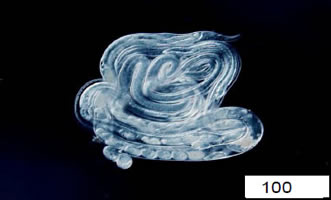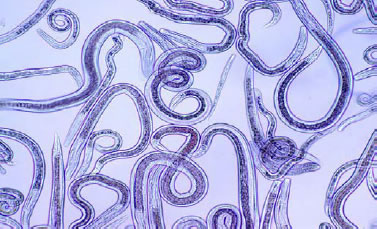Summary
 Parasitic worms might creep you out – and they literally creep, though these creatures are really fantastic animals. Can you imagine how parasites can distinguish men from chimps? Our primary interest focuses on how parasitic worms, especially nematodes, have evolved from free-living ancestors by examining their genomes.We also study the impact of parasitic infections on health and hygiene in Japan, testing samples from patients and livestock animals.
Parasitic worms might creep you out – and they literally creep, though these creatures are really fantastic animals. Can you imagine how parasites can distinguish men from chimps? Our primary interest focuses on how parasitic worms, especially nematodes, have evolved from free-living ancestors by examining their genomes.We also study the impact of parasitic infections on health and hygiene in Japan, testing samples from patients and livestock animals.
Research Projects
-
Comparative genomics of Strongyloides and related nematodes
- Sex-determination mechanisms for Strongyloides nematodes
-
Genome sequencing of Sparganum proliferum, a mysterious killer parasite
-
Development of highly sensitive antibody tests for parasitic infections
-
Case study of parasitic diseases in Japan
Lab Techniques
- Maintenance and handling of worms
- Basic molecular biology techs (e.g., PCR, Sanger sequencing, E. coli transformation)
- NGS (next generation DNA sequencers) sequencing and bioinformatics
- Antibody binding tests (ELISA,Western blotting)
- Morphological observation (confocal microscopy, immunostaining)
International Collaboration
- Department of Internal Medicine, Prince of Songkla University, Thailand
- Parasitology Division, Department of Medical Research (Lower Myanmar), Myanmar
- Department of Microbiology, University of Medicine (1), Myanmar
- Department of Veterinary Disease Biology, University of Coenhagen, Denmark
- Parasite Genomics, Sanger Institute, UK
Publications
- Yoshida A et al. (2016) Optimal ELISA antigen for the diagnosis of Ascaris suum infection in humans. Parasitol Res 2016 Sep 8. [Epub ahead of print]
- Yoshida A et al. (2016) Venison, another source of Paragonimus westermani infection. Parasitol Int 65: 607-612.
- Yoshida A et al. (2016) Larva migrans syndrome caused by Toxocara and Ascaris roundworm infections in Japanese patients. Eur J Clin Microbiol Infect Dis 35 (9): 1521-9.
- Hunt VL et al. (2016) The genomic basis of parasitism in the Strongyloides clade of nematodes. Nature Genet 48, 299–307.
- Hino A et al. (2016) A novel method to assess the biodiversity of parasites using 18S rDNA Illumina sequencing; Parasitome analysis method. Parasitol Int 65(5), 572–575.

